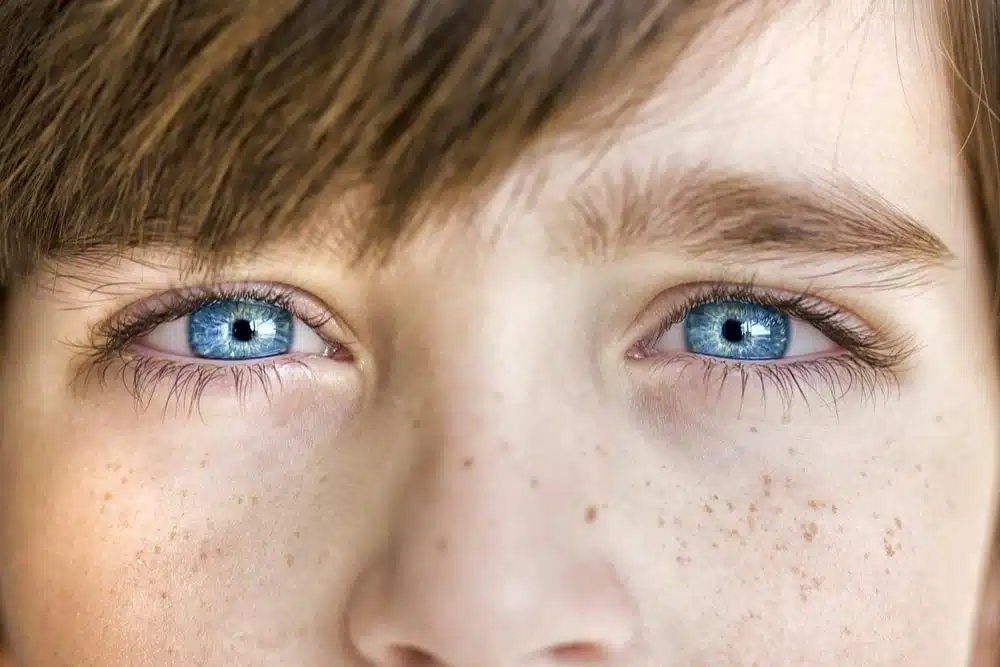Have you ever wondered why people have different coloured eyes like blue, green and brown? Or why your sibling has dark eyes and you light? Well, it all comes down to your genetics and pigment. To help you better understand why eyes come in various hues and how the colour develops when you’re a baby, read on.
Contents
It’s All About Genetics
What makes one person’s eyes blue and another brown? It’s the genes that are passed down from the parents. There are 16 different genes that control just how much melanin (pigment) we have in the iris, which is the coloured part of the eyes. In most cases, if both parents have brown eyes, it’s likely that their children will also develop brown eyes. However, the genes can mix and match in a number of ways, so it’s also possible for people to have completely different eye colours than their parents.
There’s Only One Pigment
One would assume that we have different coloured pigments in our eyes like blue, hazel, gray, and green. but in reality, we only have one — brown. In fact, it’s the total amount of pigment we have that determines whether a person’s eyes will be dark or light coloured and not the pigment colour itself.
Dominant and Recessive Genes Tell the Story
Did you know that it’s far more likely for two brown-eyed people to have a blue-eyed child than vice versa? That’s because genetically, the darker colours tend to dominate over the lighter ones. Brown tends to trump green, whereas green will dominate blue. So how could a brown-eyed couple produce a baby with blue eyes? The less dominant blue-eyed genes can be passed along by people with brown eyes until the genes for blue eyes match up generations down the line.
When Your Colour Develops
Most babies are born with light-coloured eyes. Why? At birth, babies have only a little melanin in their eyes, but over time as light stimulates the production of melanin, the colour in the iris starts to darken. This is a phenomenon you won’t notice overnight. It will happen gradually over the baby’s first year.
How Different Coloured Eyes Form
Having two different eye colours is rare, and only a small percentage of people have this uncanny trait — consider yourself lucky if you’re one of them. How does it happen? Well, sometimes the distribution of melanin isn’t uniform, which causes the condition heterochromia, where each eye is a distinctly different colour — a look that’s very unique.
If you’ve got beautiful eyes, you should show them off! Try a pair of anti-reflective (AR) coating lenses to prevent any reflections and allow others to see the real beauty of your eyes. Visit us at Laurier Optical to view our selection of AR lenses today.
